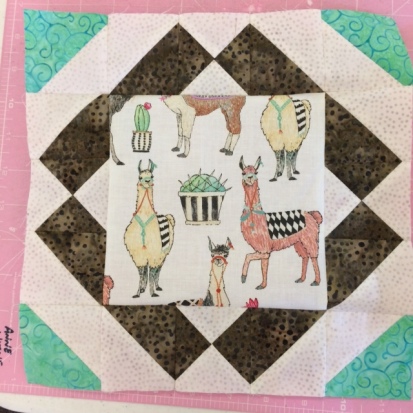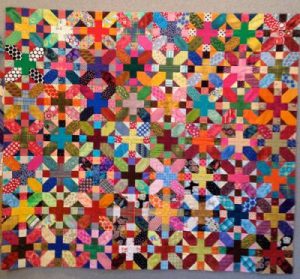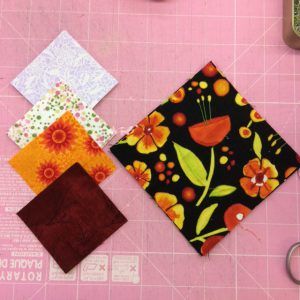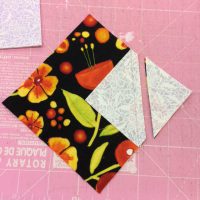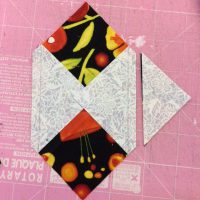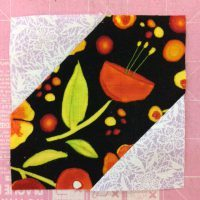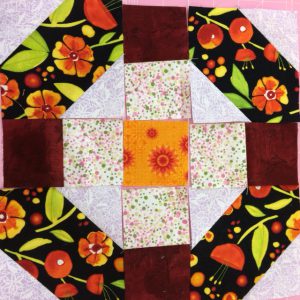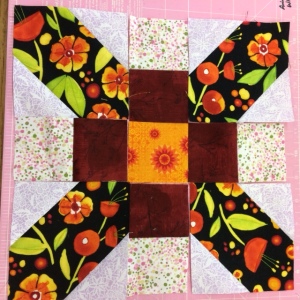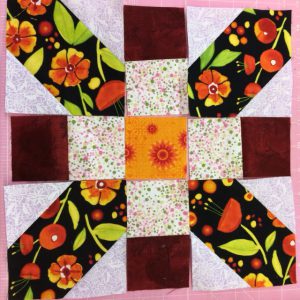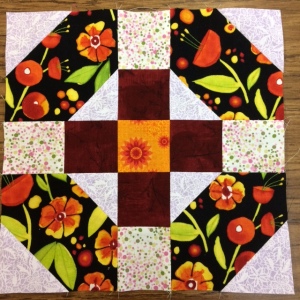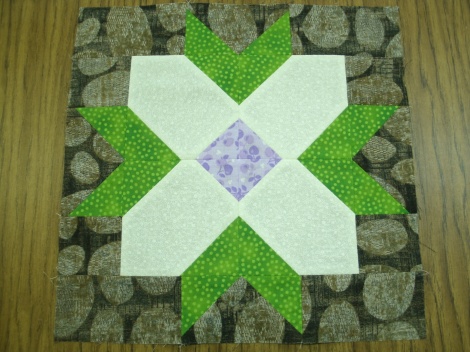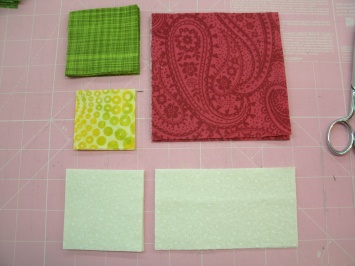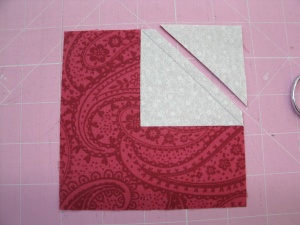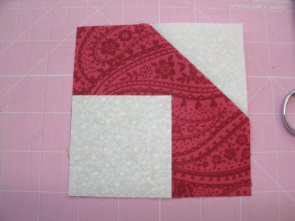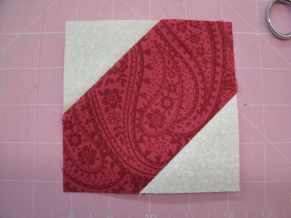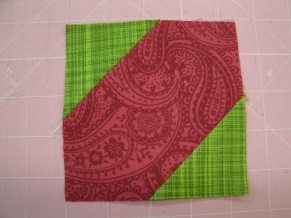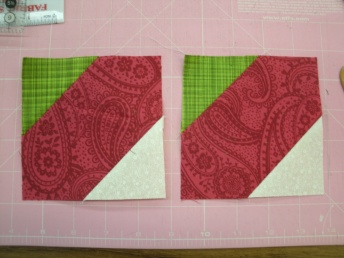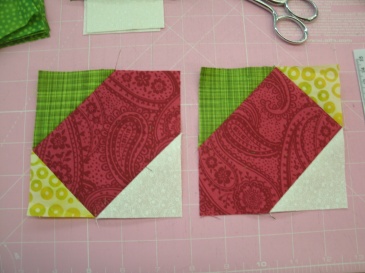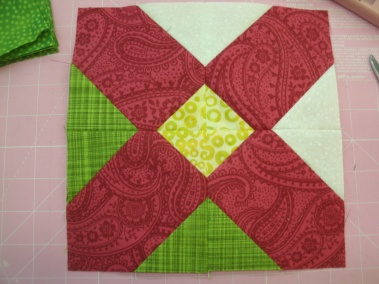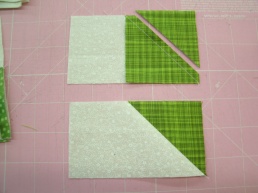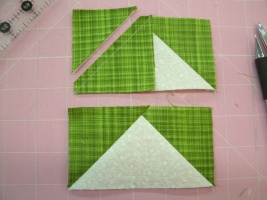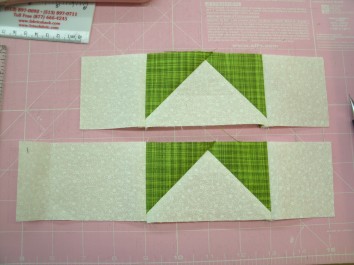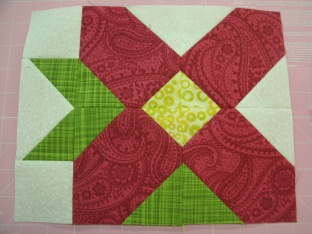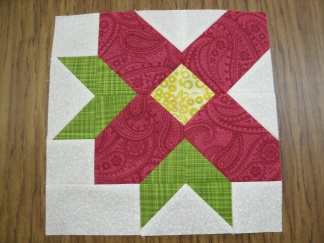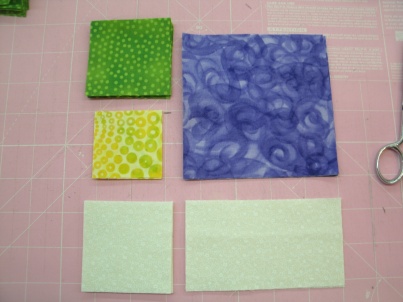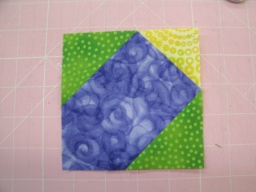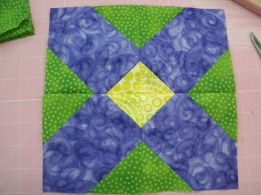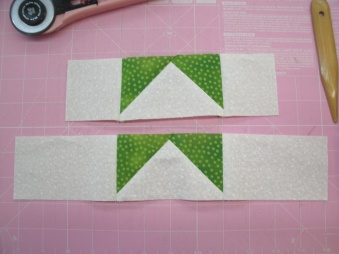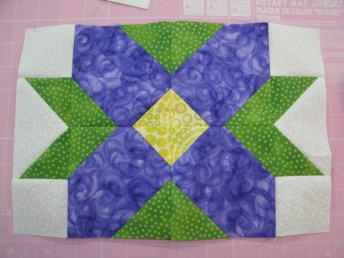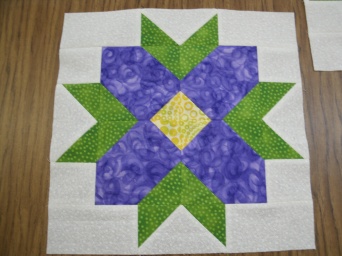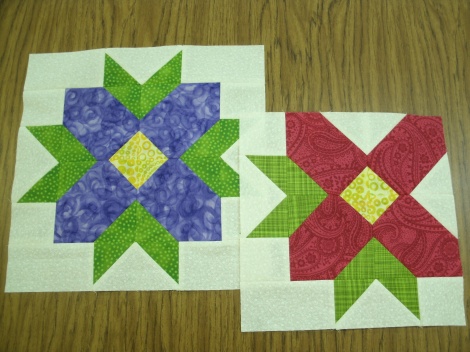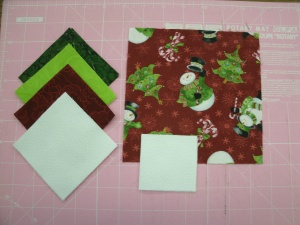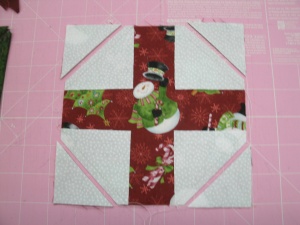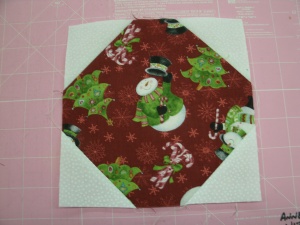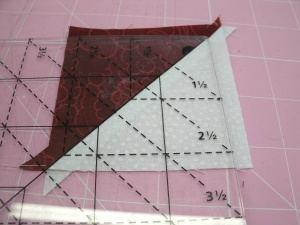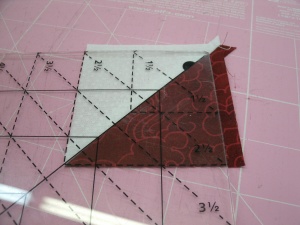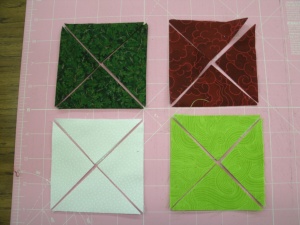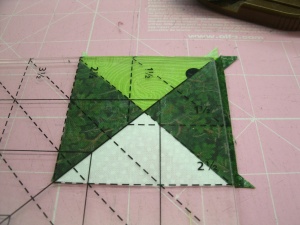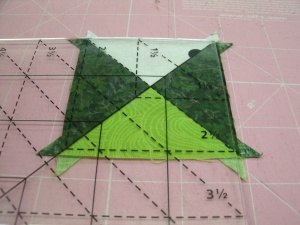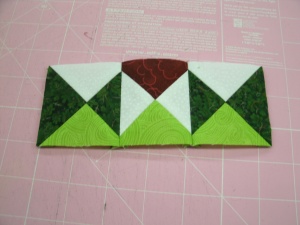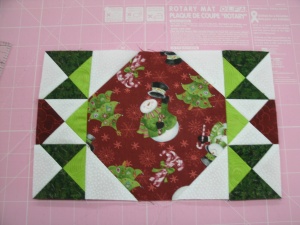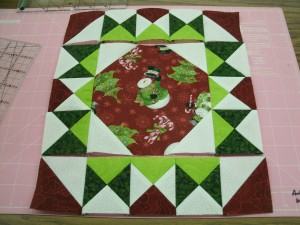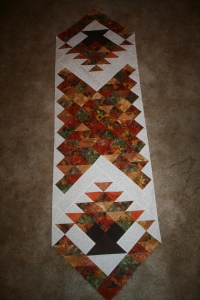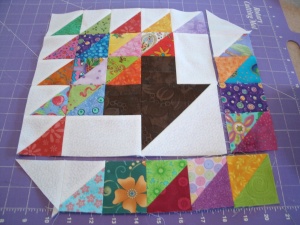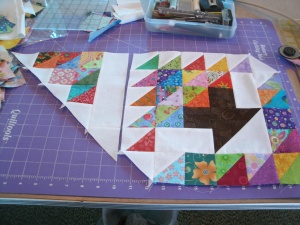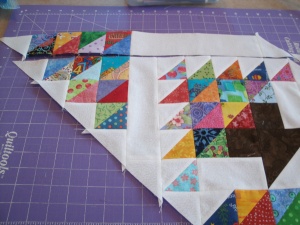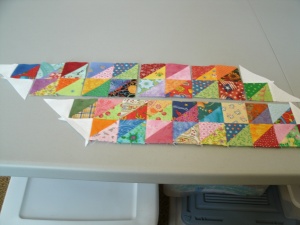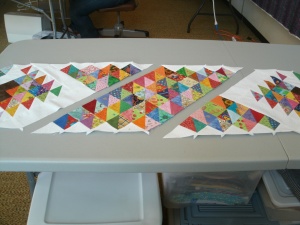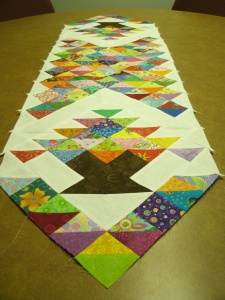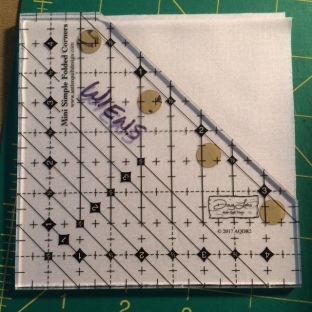 When working with the pre-cut scraps in my Thrifty Quilter system, I make a lot (a LOT) of Stitch-and-Flip corners. After thousands of of them, I was over drawing that diagonal line. One day I discovered I could layer the pieces, put my ruler down with the 1/4″ line on the diagonal points, cut that triangle away, then sew the seam and press the corner open.
When working with the pre-cut scraps in my Thrifty Quilter system, I make a lot (a LOT) of Stitch-and-Flip corners. After thousands of of them, I was over drawing that diagonal line. One day I discovered I could layer the pieces, put my ruler down with the 1/4″ line on the diagonal points, cut that triangle away, then sew the seam and press the corner open.
Then Doug Leko of Antler Quilt Design came out with a new tool he calls the Mini Simple Folded Corners. First, it’s a new gadget, and I am a gadget geek. Second, it resembles a tool idea that was simmering in the back of my mind. So, I bought one, and decided this 10″ block I call the Blooming 9-Patch would be a perfect block to demonstrate it.
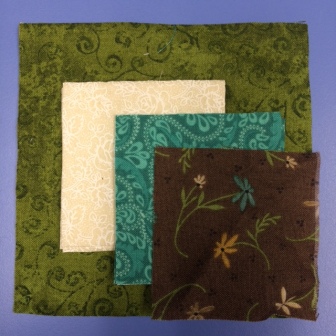 For each Blooming 9-Patch, you will need:
For each Blooming 9-Patch, you will need:
Four 4.5″ green squares
Eight 2.5″ beige squares
Four 2.5″ teal squares
One 2.5″ brown square
Step 1- Use the Stitch and Flip method to put a 2.5″ beige triangle corner on each of the 4.5″ green squares. I laid the beige square on the corner of the green square, then laid the tool down so that the 2.5″ lines lined up with the left and bottom edges of the beige square, and the printed diagonal line (which indicates my seam line) ran diagonally from the upper left to lower right corners. I cut away that triangle, sewed the seam and pressed the corner open. Again, this is not the way the tool was designed to work, but it worked for this block.
Step 2 – Sew the 2.5″ teal squares to the remaining 2.5″ beige squares.
Step 3 – Sew two rows with a teal/beige pair sandwiched between two green/white squares. Sew the other teal/white pairs into a strip with the brown square between the two teal squares.
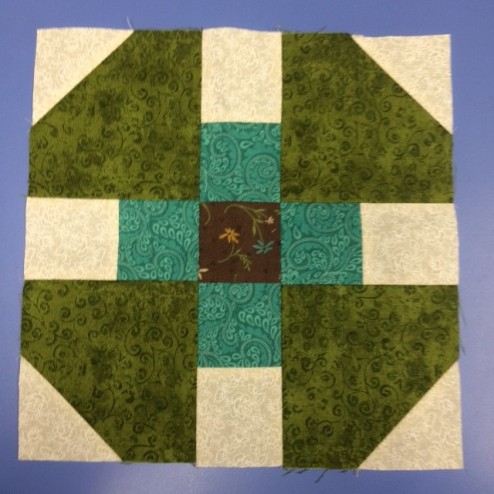
Step 4 – Sew the row of squares between the other two rows to complete your Blooming 9-Patch block!
The block, unfinished, measures 10.5″ x 10.5″. I have a plan for it in my sketch book, which should make use of a layer cake I have left over from my stint as an Island Batik Ambassador. It’s on my To-Do list, but a ways down the list right now.
I have a classic block coming up next here on Seams Like a Plan.






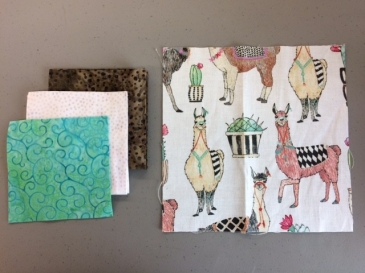 Here are the TQ pieces needed for this block:
Here are the TQ pieces needed for this block: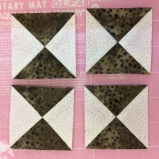
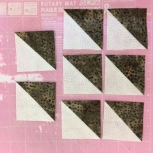
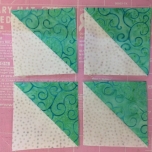 Cut the remaining brown squares, white squares and the turquoise squares in half diagonally. Sew into eight brown and white half-square triangles (HSTs) and four turquoise and white HSTs. Trim each to 2.5″.
Cut the remaining brown squares, white squares and the turquoise squares in half diagonally. Sew into eight brown and white half-square triangles (HSTs) and four turquoise and white HSTs. Trim each to 2.5″.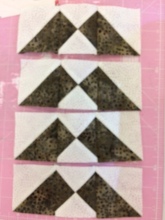 Sew a brown and white HST to the brown sides of each QST as shown.
Sew a brown and white HST to the brown sides of each QST as shown.